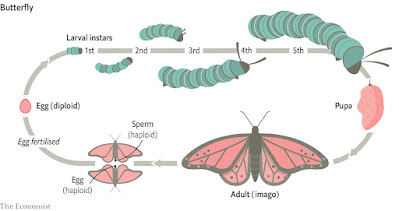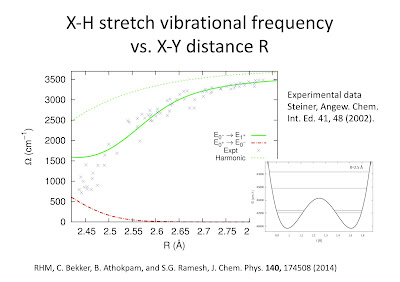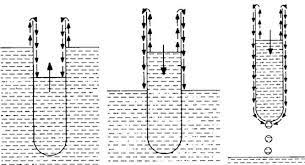Symmetry breaking is integral to biology. Spatial symmetry is broken as cells differentiate and also as organs form. Time reversal symmetry is broken in the life history of the development of individuals: from birth to death, it is heading just one way.
The fourth article in The Economist, Biology briefs, is Making your way in the world: An individual’s life story is a dance to the music of time. Here is the opening paragraph.
The organs of a body are a spatial division of labour, one created by different genes being turned on in different cells. The same process serves to give individual lives a division of labour over time. Complex algae, animals, fungi and plants all have predictable life histories which separate out three basic aspects of development—the creation of an autonomous individual, growth and reproduction—and run them sequentially.
There is also a fourth stage: death!
Individual identity is tied up with sex.
A lot of the complexity here is to do with sex... Sex is clearly the start of something new: a novel individual with a novel genetic blueprint...
When a human embryo is born as a baby, it already contains almost all of the organs which that individual will ever possess. This comes about first by the repeated division of the initial, fertilised egg into many cells that have the potential to become any part of the body.
Then symmetry breaking occurs: left and right, head and tail are delineated.
Then, around the 16th day of development, the [human] embryo folds in on itself... [and the] body plan begin to take on a physical form, defining the head and the tail (for human embryos do, indeed, have tails), the left and the right, the inner and the outer.
...a butterfly embryo develops not only the organs needed in order to be a caterpillar, but also starter packs, called imaginal discs, for the organs that will be needed in adulthood.
Plants have two separate life histories, which alternate from generation to generation—though this is rarely obvious to human observers.
These two life histories (mating and dispersal) are associated with "two, radically different, types of body": gametophytes, the mating body type, and sporophyte the dispersal body type. The life cycle of ferns is pictured below.
Here is a beautiful video of the life cycle of a butterfly.
Aside: There is a nice discussion of symmetry breaking and pattern formation in biology in chapter 7 of Fearful Symmetry: Is God a Geometer? by Ian Stewart and Marty Golubitsky.


























